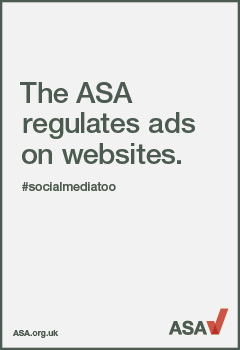Written by Amanda Griffiths, Head of Communications Planning at Royal Mail Marketreach
Last year was a year of elections. Around the world, new leaders took office with the promise of change. Now, with critical political milestones on the horizon, from Donald Trump’s first 100 days in Spring to the Labour Party’s one-year anniversary in the Summer, the next few months pose leaders with a new communication challenge.
Public sentiment here is critical, and that relies on governing parties showing the meaningful impact of their short time in office as effectively as possible. This means understanding how and where to communicate.
Luckily, the recent elections shone a light on political communications – and the public’s feelings towards them. What we learned may surprise you.
Medium matters
With each election cycle, the volume of digital media grows. Last year’s General Election was expected to be the ‘first TikTok election’,
To understand if this was true and what it meant for direct mail, Marketreach conducted a significant piece of consumer research during and after the General Election. The findings from this study as reported in Landslide: How mail won the General Election were surprising and enlightening. Trust in parties and candidates is critical in an election. Yet one in three Brits reported concerns that social media posts about the election were misleading or inaccurate. While digital platforms were expected to be particularly popular with younger constituents, only 65 percent of voters aged 18-24 reported engaging with political messages on digital channels. Whereas 81 percent of this same 18-24 audience reported engaging with direct mail, confirming voters relied significantly more on mail than digital when exploring serious matters such as who and what to vote for.
What did this research tell us about how people want to be communicated with? This first answer, to me, is thoughtfully. We live in a world in which political leaders from all sides are gravitating towards soundbites – short, sharp party lines that can fit into evening news programming, front pages, and social media feeds. But these soundbites by definition provide little detail and are also short-lived – here today and gone tomorrow. This not only means that an unengaged audience might miss the impact of a strong soundbite, but also its transience makes political communications much harder to fact check, to process, or to expand on.
For any party attempting to showcase its thinking, this is a fatal flaw. At the moments in time in which voters truly engage with their leaders – elections, milestones, times of crisis – thoughtful, longer form communication is a powerful tool. It stands up to scrutiny, and politicians look all the better for it.
Constituents also want to feel like the communications they receive are honest. No matter how good the message, voters need to be able to trust what they’re reading. This is why mail becomes so critical in election periods. It reaches voters where they are, at home, with a trusted message that they can read, reread, and explore further (if needed) in their own time. In fact, research Marketreach conducted in partnership with Trinity McQueen showed that 71 percent of people trust the mail they receive, particularly when it’s addressed to them.
Time for reflection
The recent General Election showed a nation particularly open to considering their choices. In our election survey, around half of all voters reported that they were uncertain who they might vote for during the election campaign and open to changing their minds before casting their votes. This was even higher for younger voters, rising to 61 percent among 18-34 year olds.
And not just targeting but timing and location is key when it comes to political communications. Mediums, like out-of-home, social and online display advertising all work well to drive home messages and influence voters, but they can often appear to a voter while that person is distracted, disinterested, or even just tired after a long days’ work, meaning they lose their impact. And once passed by or scrolled over, they often cannot be found again.

To paraphrase a political slogan we’ve heard often – the public wants to take back control over how they engage with politics. Effective communications understand this, giving people the freedom to learn and engage in their own time, at their own pace, without in-fighting or soundbites.
By offering a tangible piece of communication, delivered to their home, mail offers a flexible informative tool that recipients can retain and read in their own time, at their own pace. From a survey conducted with Blue Yonder and WARC we know that 58 percent of mail is kept for future reference. And in political communication, this means valuable messaging is likely to be “saved for later”, stored and re-read whenever voters choose to. Among our surveyed voters, 59 percent read electoral mail, compared to just 36 percent reading posters, social and digital ads.
But mail does not operate in a vacuum. Voters value it specifically because they see it as playing a strong part in an integrated election communication campaign. Along with Party Political Broadcasts, online advertising, social media, press and out of home (OOH), mail enables voters to find the accurate and honest information they need to play their part in this vital democratic process.
Leaning into thoughtful communication
So as we approach a key milestone in the political calendar, last year’s election offers us a handy, recent guide to ensure that party leaders understand and meet the nation’s communication preferences to find success.
For communicators and marketers, I believe the biggest takeaway from last year is that the public is engaged with their government and political process. Voters believed the election was important and they wanted to make the right decision. Audiences truly respond to and consider political messaging that shows solid and detailed thinking. Social media and TV broadcasts, or interviews, will always have a role in helping to land and reiterate party messages. But to truly engage and convince voters to act, these channels must be reinforced with direct mail. Uniquely, this channel delivers engaging detailed communications to constituents where they live in a way that meets their needs for information they can commit to in their own space and time.
Politics has rarely felt more personal, more impactful on our lives, than it does today. Why shouldn’t our outreach feel the same?







Recent Comments